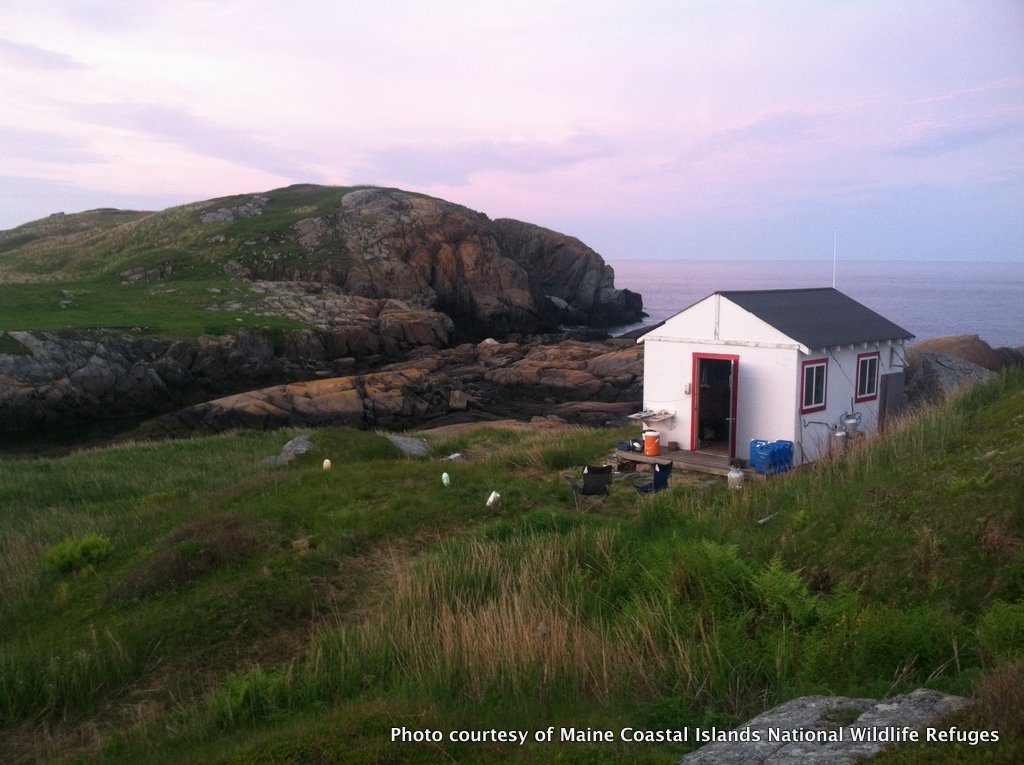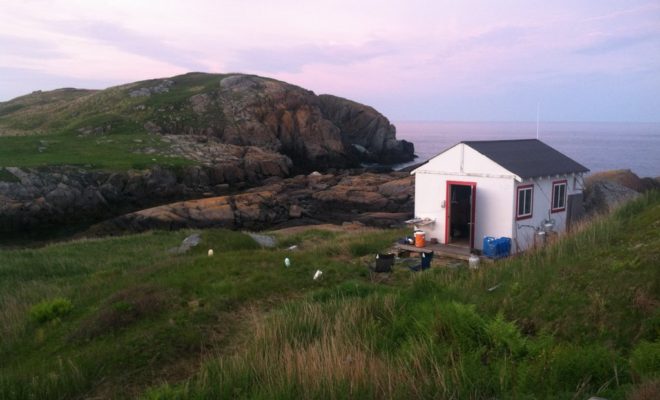Now that our summer intern program has begun, crews are busy preparing the islands of the Maine Coastal Islands National Wildlife Refuges for the seabirds that call them home each summer. Here are two reports, from Metinic and from Eastern and Western Brother’s Islands.
From Metinic, the crew of Chelsea and Katie report in:
Since arriving on our island home (and after the fog cleared) we have been preparing for the coming season. The vegetation on Metinic Island is kept under control by grazing sheep. This flock is kept on the south end of the island when the terns arrive and begin to nest to prevent the sheep from accidentally stepping on the terns’ eggs. In order to get them to the south end of the island we (with a lot of help from the refuge staff and friends) have to organize a round-up. This not-so-easy task can take all day, and this year in particular, due to a handful of clever sheep seeking refuge in the island’s dense woods. We will miss the entertainment the lambs brought us but the hole in our hearts will soon be filled by the sound of many hungry tern chicks. Until then, we will be exploring the island, setting up blinds, and preparing for the busy summer ahead of us.
From Eastern and Western Brother’s Islands, Julia and Sarah report on their activities:
Hello from Eastern and Western Brother’s Islands! We are the northernmost seabird restoration island in the Refuge, and also one of the newest. This summer will represent the sixth year of seabird restoration for the Brother’s Island and the crew (Julia and Sarah) are excited to be a part of it!
Historically, this seventeen-acre island was home to nesting seabirds of all types including terns, gulls, alcids, sea ducks, and petrels. In recent years the island has been subject to heavy predation by gulls, hawks, and small mammals such as mink, and many of our seabirds are now gone. It is our hope that with a continued human presence on the island to monitor and deter predators we will once again be able to establish a thriving seabird colony. Through it all black guillemots, the most common alcid in the Gulf of Maine, have persisted here and continue to thrive on the eighty-foot cliffs of Eastern Brother’s Island’s south shore.
This year we have deployed alcid and tern decoys along the perimeter of the island to help attract seabirds searching for a new home. This method has been tried successfully on several other Maine restoration islands, but we have taken it a step further. In addition to the decoys we have set up two separate sound systems with speakers that play sounds from active colonies. This way, even when there is dense fog (like we have had the past few days!) birds flying within earshot are still attracted to the islands.
Despite EBI’s seeming emptiness without terns, puffins, and razorbills, there is still lots of life to be found. The island hosts many different types of vegetation habitats and a variety of plants thrive here. Song and savannah sparrows make this their home and next door on WBI (where we also live) barn swallows, yellow warblers, and common yellow throats probably try to raise young. Sheep have been re-introduced to EBI to graze and are our constant companions as they are free to roam the island, lambs trailing behind. Creches (groups) of common eiders forage all around the islands and harbor seals bask in the sun on our rocks. As the season on Eastern and Western Brother’s Islands opens, we look forward to what lies ahead!


